Go back to the briefs you read earlier. Think about how you might go about answering one of these briefs. Write a short rationale outlining your intended approach. You’ll need to think creatively about how you respond to the brief but you do not need to produce any actual work – just put together a rationale as to how you would approach answering it. You might find you have more than one rationale to choose from.
Reflect on whether you found writing a rationale useful in structuring your creative thinking.
Initial Thoughts
For some reason I find the concept of writing a rationale difficult to understand. I seem to have a mental block when it comes to putting down into words the reasoning for a particular idea, in a formal, titled format. I am not sure if this is, in part, linked to a lack of self-belief in many of my ideas, especially in the early conception stages, and the thought of formalising the reasoning behind a certain idea in words feels like I am being too overly confident of its worth.
I also was not sure of what the benefits would be of writing a rationale. I have developed quite a productive process for the preliminary stages in my creative projects, which includes mind-mapping and thumbnails, before moving onto drafts.
On the other hand, I can also see from the perspective of presenting a concept to a potential client and how having a summary of the reasons behind a particular idea would be be expected – I just find it hard to imagine myself being in that kind of situation ((i.e. presenting to a client) in the first place!
Choosing a Brief
As previously stated, I much prefer closed briefs to open ones, so I opted for the Sample Brief 3 – Sainsbury’s, which had the most concise details regarding the brief’s requirements. This brief also appealed to me the most in terms of subjects matter out of the options on offer.
I spent some time browsing Sainsbury’s website, reading about the company’s policies with regards to the three themes in the brief.
Sketching Ideas
In order to get to the stage where I would feel able to produce a rationale, I would need to have some idea of what I intended to propose. I, therefore, chose to draw out some very rough sketches for potential ideas that could be carried forward.
Initially, I intended to focus on the design for the theme ‘Show respect for our environment’. I came up with the idea of showing a seedling being cradled in the palms of one or two hands.
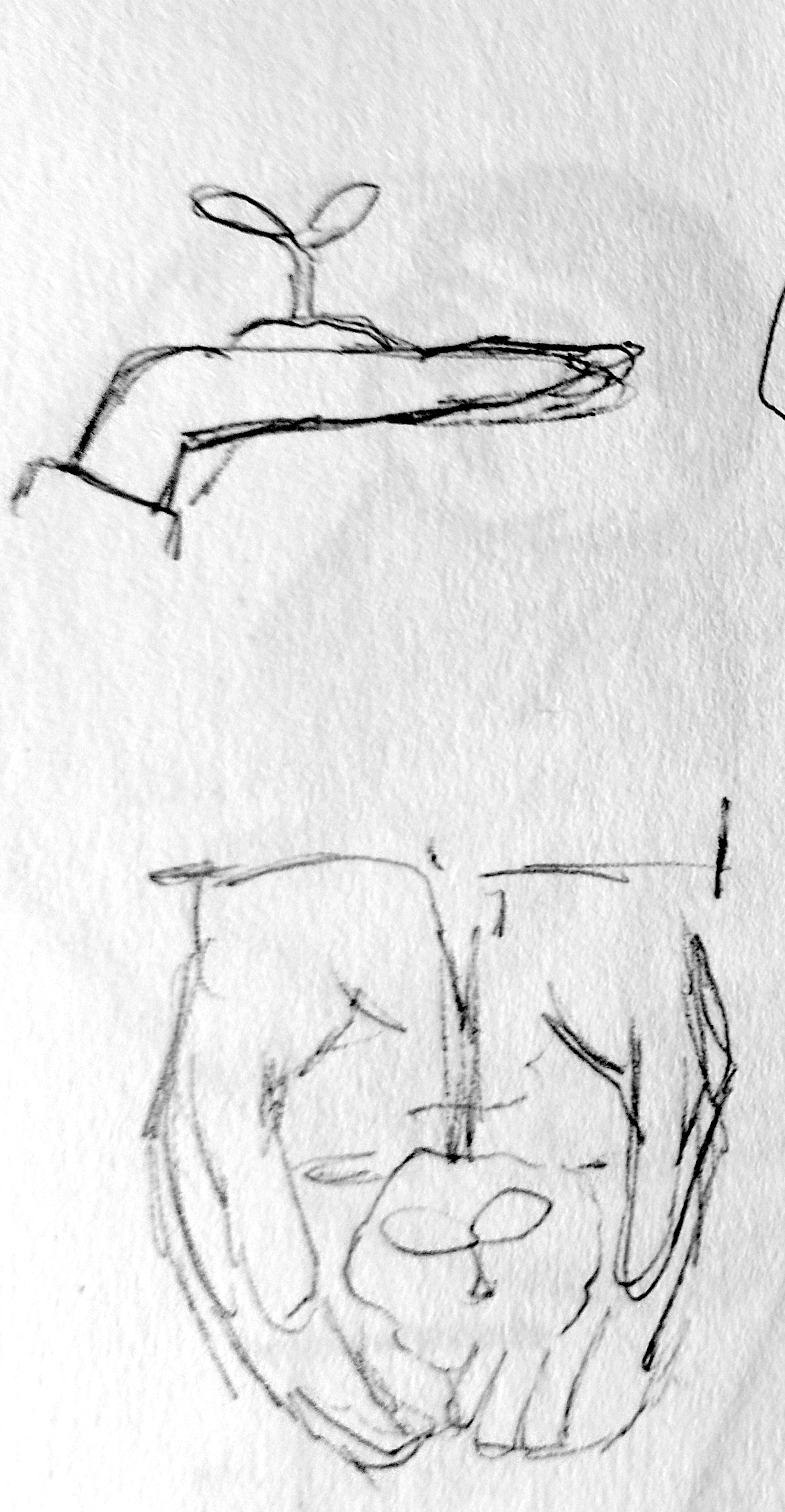
Then I considered a potential idea for the theme ‘Source with integrity’, but the only drawing I came up with had a polar bear pole fishing on the ice (a reference to the claim that Sainsbury’s only catches tuna using pole fishing rather than using nets, plus the inclusion of the polar bear on ice could be a slight hint to sustainability/climate change).
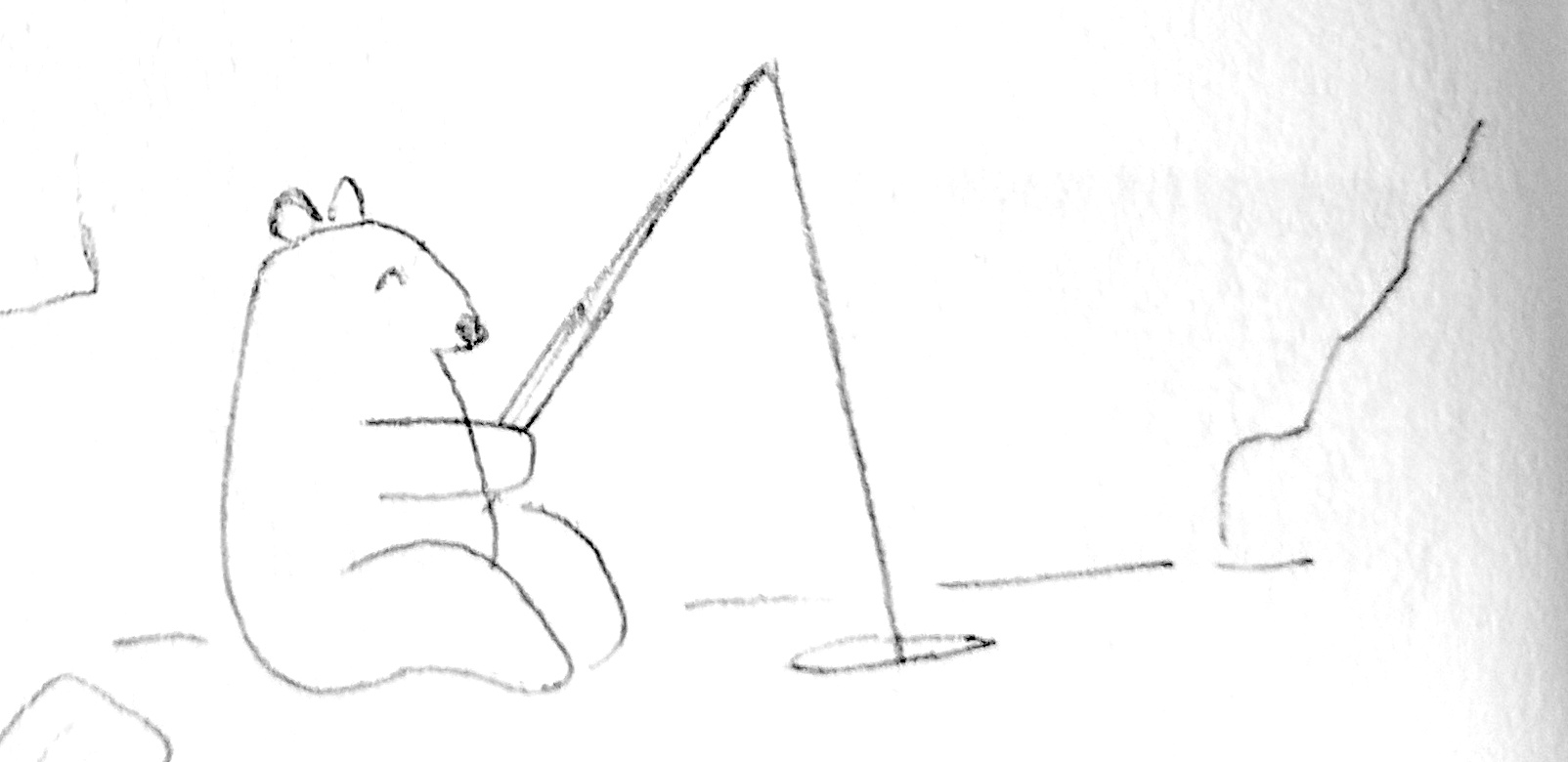
The main problem I had with trying to come up with ideas for these two themes was that I did not generally believe most of the claims, being rather cynical about claims made by most businesses and industry when it comes to the environment/climate change, so I found it quite challenging to think of ideas that would promote them.
I was more enthused about the first theme listed in the brief called ‘Be the best for food and health’, which appealed to me much more and I felt it was a topic I could get behind with a clearer conscience.
I intended on aiming my design at a younger audience, so I was instantly drawn to the possibility of making characters out of fruit and vegetables, but no visual ideas were particularly forthcoming.
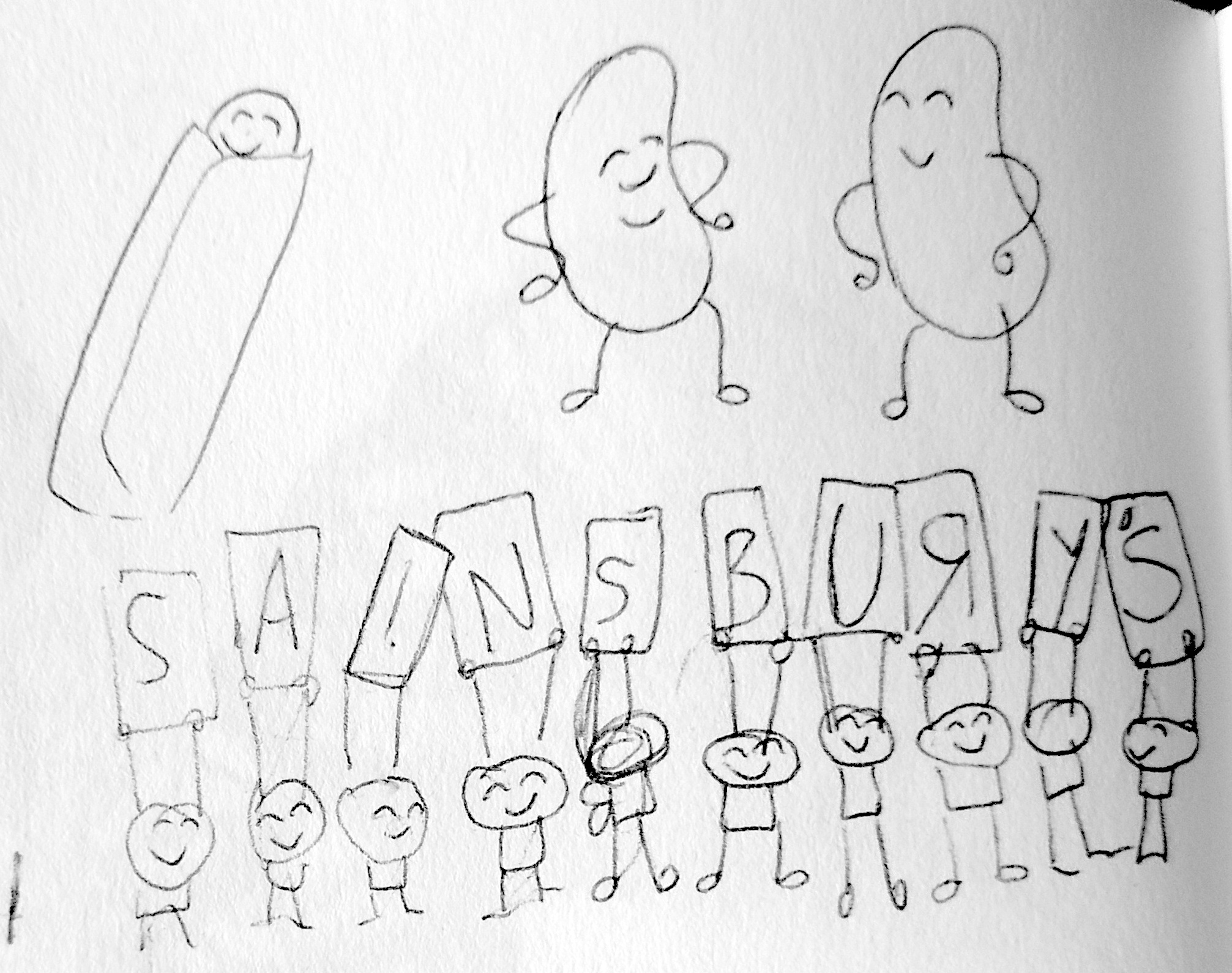
An idea that did come to mind was to have a group of fruit and vegetables as superheroes.
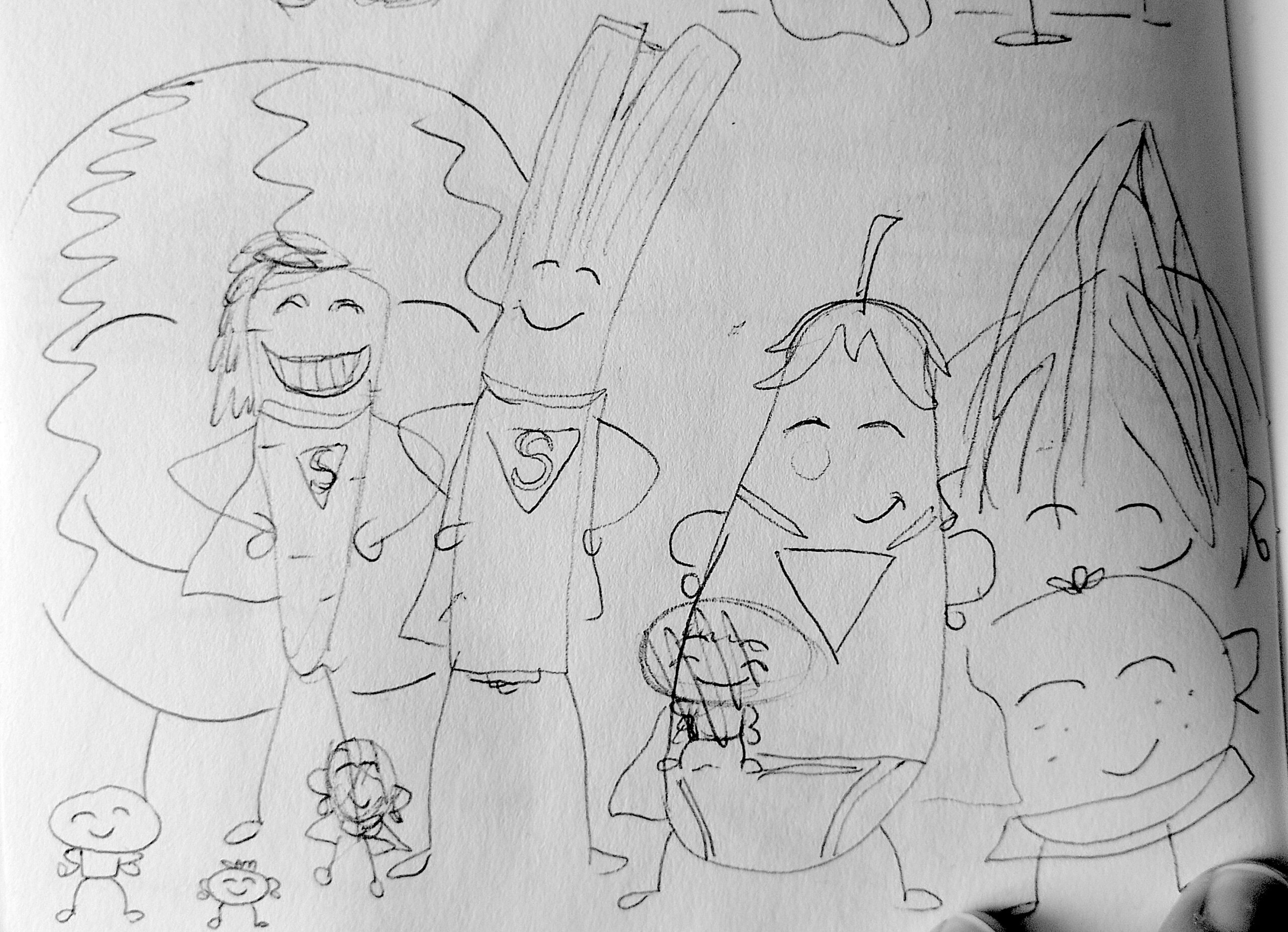
(click on image for larger version, opens in new tab).
However, I soon came to the conclusion that this has become quite a cliché and I do not think it has as much impact as it once did.
Developing an Idea and Mind-Mapping
I did find, however, that this led to a trail of thought having the fruit and vegetables as athletes instead of superheroes. I then remembered that 2024 was an Olympic year (and I should have been doing this exercise earlier in that year) and so, as the bag would be limited edition, perhaps they might be timed to link in with that. Supermarkets (along with most major businesses) do seem to love using such events for promotional purposes.
I felt like I had some momentum with this idea and I drew out a very rough mind-map, which I found myself adding to quite easily.
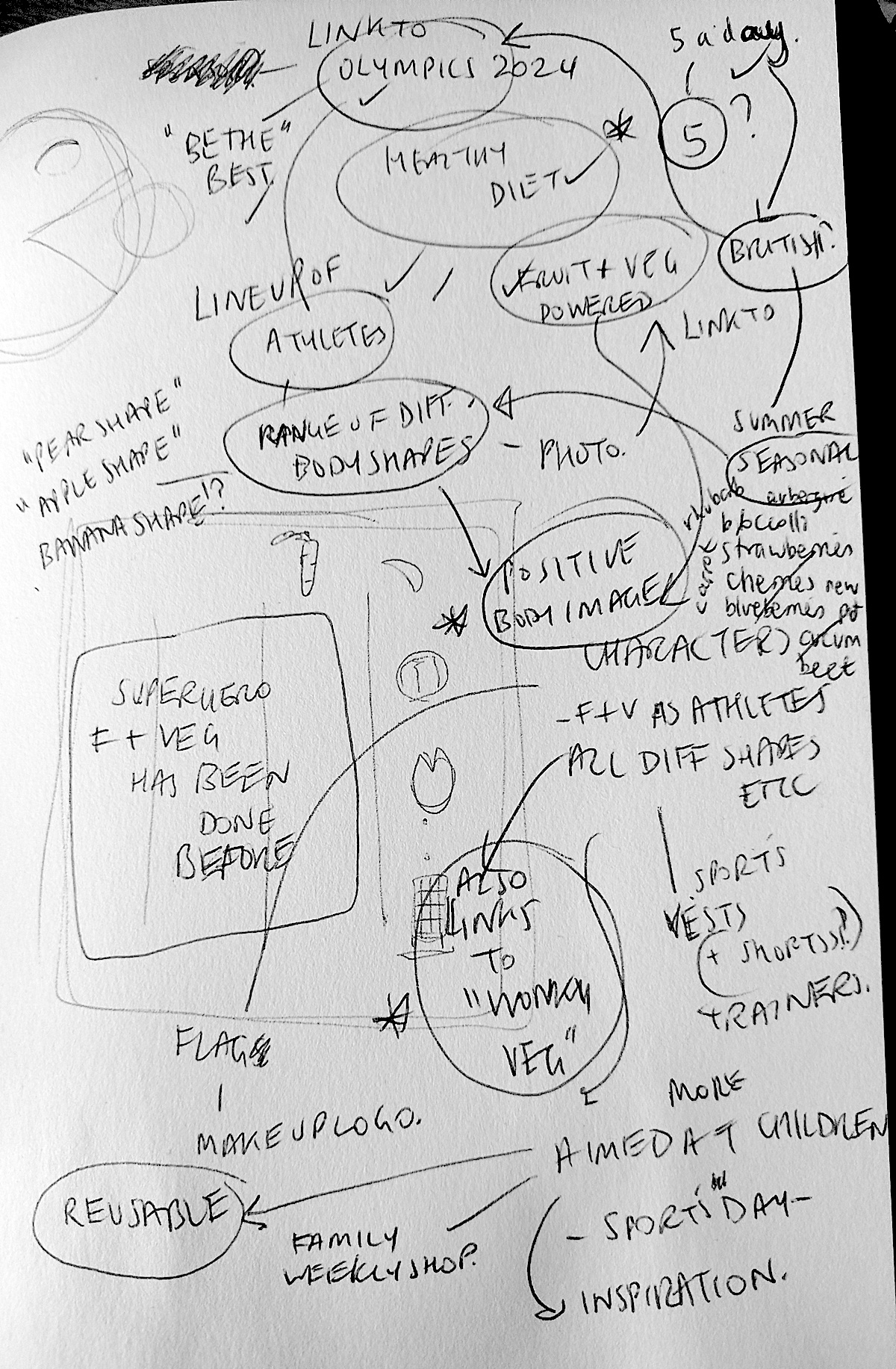
(click on image for larger version, opens in new tab).
I then found it useful to redo the mind-map in a neater form, which helped to clarify my thinking.
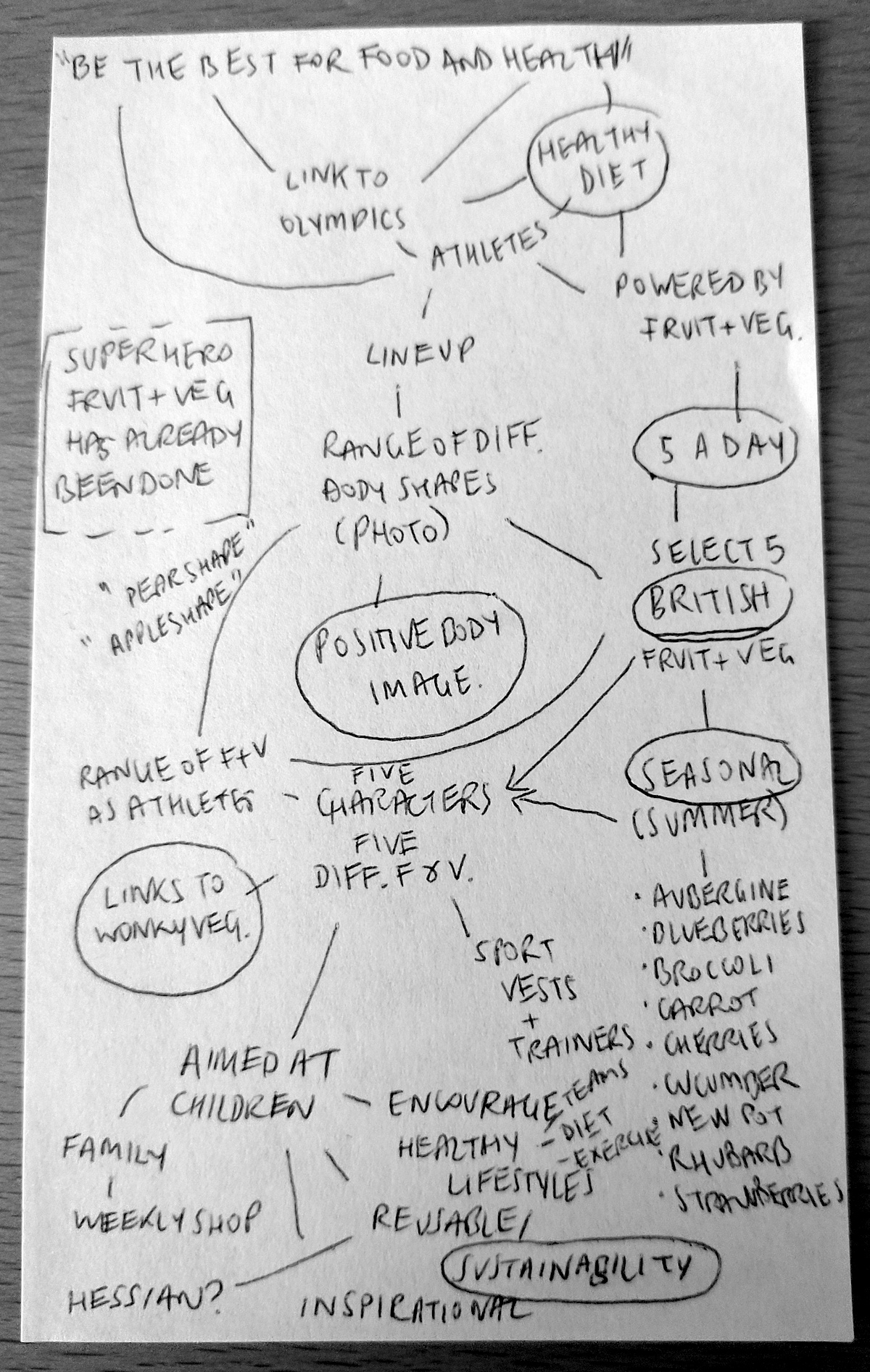
(click on image for larger version, opens in new tab).
There were several key themes linked to my idea of ‘fruit and veg athletes’ (circled) that I managed to include in the mind-map that I thought might potentially be eye-catching to Sainsbury’s.
The Rationale
Client: Sainsbury’s
Brief: Create a piece of design or illustration for a limited edition range of Sainsbury’s shopping bags.
Chosen Theme: Be the best for food and health
Rationale
The target audience (TA) for this bag illustration would be children, visiting Sainsbury’s for the family’s weekly ‘big shop’ or just popping in to pick up a few items.
The proposed illustration would consist of five characters based on various seasonal British fruit and vegetables, such as a strawberry and broccoli. The characters would be designed as athletes, which links to the 2024 Paris Olympics, and would be wearing sport tops and trainers. The use of fruit and vegetable characters as athletes intends to encourage children, the TA, to eat healthily and inspire them to keep active.
Using a range of produce, all different shapes and sizes, would enforce the reality of the mixture of body shapes in human equivalents, thus promoting a positive self body image. This could also be linked to Sainsbury’s range of ‘less than perfect’ fruit and vegetables – just as tasty and good for you.
Final Thoughts
As I was undertaking this exercise I came to realise that although I may not have specifically written a rationale before, I find myself regularly questioning my decisions and intentions as I work on initial ideas, and throughout the entire design process. I believe that it is important to challenge and thus justify why a particular idea would or would not work, as well as later reflecting critically upon the project’s completion.
It may be beneficial to begin including a short rationale near the beginning of each Exercise and Assignment to outline my reasoning of a chosen concept. However, I found the revised mind-map to be a more succinct way of explaining my idea and clarifying this to myself in a visual format.
I can certainly understand why a rationale would be useful when sending a proposal to a potential client, as it should remove the waffle and clearly define the idea for them to provide feedback, before progressing with the project.
Bibliography
Aitkin, C. (2022) Writing a Project Rationale: A guide for students. Available at: https://descan.ca/designcurrency/writing-a-project-rationale/ (Accessed 21 January 2025).
Reilly, J. (2013) Can you guess the sport by the shape of these athlete’s body? From sumo to football and shot put to NFL… the incredible range of shapes and sizes as 125 of the world’s greatest measure up. Available at: https://www.dailymail.co.uk/sport/article-2503371/Can-guess-sport-shape-athletes-body.html (Accessed 21 January 2025).
Sainsbury’s (n.d.) Sainsbury’s. Available at: https://about.sainsburys.co.uk/ (Accessed 21 January 2025).